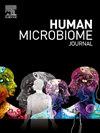肠道生态失调和非酒精性脂肪肝
Q1 Medicine
引用次数: 3
摘要
非酒精性脂肪性肝病(NAFLD)影响20-30%的人口,在工业化地区患病率增加。一些NAFLD患者发展为一种称为非酒精性脂肪性肝炎(NASH)的炎症状态,其特征是肝细胞损伤、先天免疫细胞介导的炎症和进行性肝纤维化。在临床实践中,腹部影像学显示肝脏脂肪变性,如果拒绝其他疾病,则足以诊断NAFLD。然而,需要肝活检来区分NASH和单纯性脂肪变性。用于治疗肥胖和代谢综合征的治疗策略可改善NAFLD,但对NASH尚无有效的特异性治疗方法。肠道微生物群(GM)由数百万种微生物组成。转基因的变化对宿主健康有重大影响。肠道生态失调是一种GM失衡,可诱导上皮屏障通透性增加,GM来源的介质通过门静脉迁移到肝脏。这些介质,如脂多糖、短链脂肪酸、胆汁酸、胆碱和内源性乙醇,似乎与NAFLD的发病有关。鉴于这一证据,考虑通过组学技术确定转基因衍生介质作为NASH的非侵入性诊断工具,并将重点研究微生物群调节作为NASH的可能治疗方法,将是很有趣的。本文章由计算机程序翻译,如有差异,请以英文原文为准。
Intestinal Dysbiosis and Non-Alcoholic Fatty Liver Disease
Non-alcoholic fatty liver disease (NAFLD) affects 20–30% of the population, with an increased prevalence in industrialized regions. Some patients with NAFLD develop an inflammatory condition termed non-alcoholic steatohepatitis (NASH) that is characterized by hepatocellular injury, innate immune cell-mediated inflammation, and progressive liver fibrosis. In clinical practice, abdominal imaging, which reveals hepatic steatosis, is sufficient for NAFLD diagnosis if other diseases have been rejected. However, a liver biopsy is needed to differentiate NASH from simple steatosis. Therapeutic strategies used to treat obesity and metabolic syndrome improve NAFLD, but there is no specific treatment effective for NASH. The gut microbiota (GM) is composed of millions of microorganisms. Changes in the GM have a significant impact on host health. Intestinal dysbiosis is an imbalance in the GM that can induce increased permeability of the epithelial barrier, with migration of GM-derived mediators through portal vein to the liver. These mediators, such as lipopolysaccharides, short-chain fatty acids, bile acids (BAs), choline, and endogenous ethanol, seem to be involved in NAFLD pathogenesis. Given this evidence, it would be interesting to consider GM-derived mediator determination through omics techniques as a noninvasive diagnostic tool for NASH and to focus research on microbiota modulation as a possible treatment for NASH.
求助全文
通过发布文献求助,成功后即可免费获取论文全文。
去求助
来源期刊

Human Microbiome Journal
Medicine-Infectious Diseases
自引率
0.00%
发文量
0
期刊介绍:
The innumerable microbes living in and on our bodies are known to affect human wellbeing, but our knowledge of their role is still at the very early stages of understanding. Human Microbiome is a new open access journal dedicated to research on the impact of the microbiome on human health and disease. The journal will publish original research, reviews, comments, human microbe descriptions and genome, and letters. Topics covered will include: the repertoire of human-associated microbes, therapeutic intervention, pathophysiology, experimental models, physiological, geographical, and pathological changes, and technical reports; genomic, metabolomic, transcriptomic, and culturomic approaches are welcome.
 求助内容:
求助内容: 应助结果提醒方式:
应助结果提醒方式:


